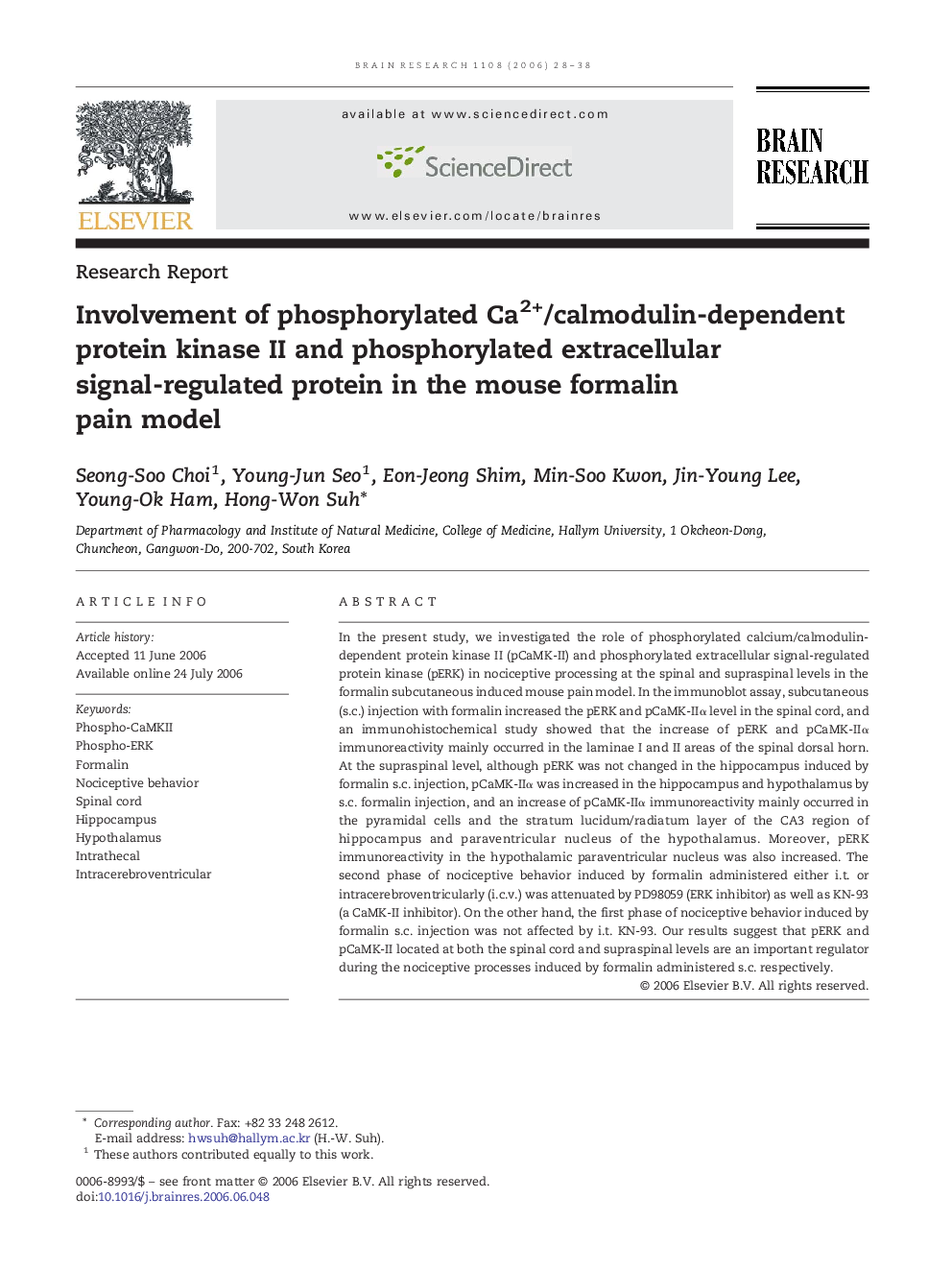| Article ID | Journal | Published Year | Pages | File Type |
|---|---|---|---|---|
| 4332348 | Brain Research | 2006 | 11 Pages |
Abstract
In the present study, we investigated the role of phosphorylated calcium/calmodulin-dependent protein kinase II (pCaMK-II) and phosphorylated extracellular signal-regulated protein kinase (pERK) in nociceptive processing at the spinal and supraspinal levels in the formalin subcutaneous induced mouse pain model. In the immunoblot assay, subcutaneous (s.c.) injection with formalin increased the pERK and pCaMK-IIα level in the spinal cord, and an immunohistochemical study showed that the increase of pERK and pCaMK-IIα immunoreactivity mainly occurred in the laminae I and II areas of the spinal dorsal horn. At the supraspinal level, although pERK was not changed in the hippocampus induced by formalin s.c. injection, pCaMK-IIα was increased in the hippocampus and hypothalamus by s.c. formalin injection, and an increase of pCaMK-IIα immunoreactivity mainly occurred in the pyramidal cells and the stratum lucidum/radiatum layer of the CA3 region of hippocampus and paraventricular nucleus of the hypothalamus. Moreover, pERK immunoreactivity in the hypothalamic paraventricular nucleus was also increased. The second phase of nociceptive behavior induced by formalin administered either i.t. or intracerebroventricularly (i.c.v.) was attenuated by PD98059 (ERK inhibitor) as well as KN-93(a CaMK-II inhibitor). On the other hand, the first phase of nociceptive behavior induced by formalin s.c. injection was not affected by i.t. KN-93. Our results suggest that pERK and pCaMK-II located at both the spinal cord and supraspinal levels are an important regulator during the nociceptive processes induced by formalin administered s.c. respectively.
Keywords
Related Topics
Life Sciences
Neuroscience
Neuroscience (General)
Authors
Seong-Soo Choi, Young-Jun Seo, Eon-Jeong Shim, Min-Soo Kwon, Jin-Young Lee, Young-Ok Ham, Hong-Won Suh,
